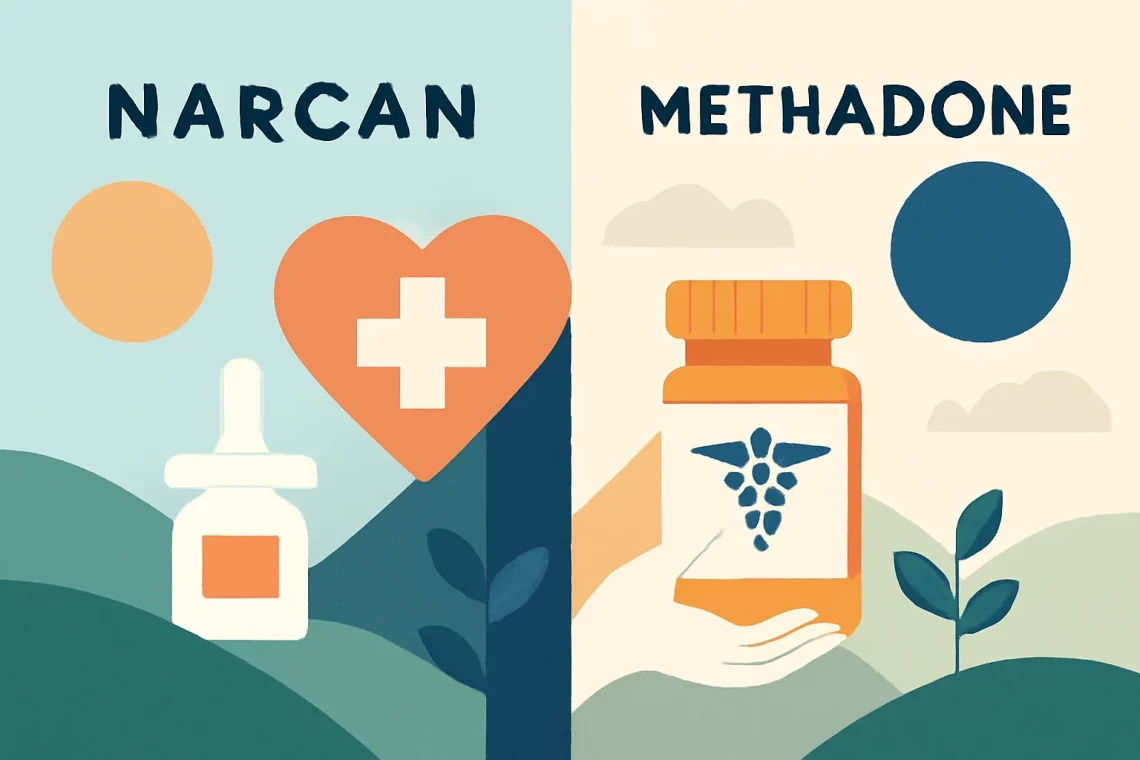
Narcan vs Methadone: Understanding Their Roles in Opioid Treatment
The opioid crisis has emerged as a significant public health challenge, affecting millions of individuals and their families. With the increasing prevalence of opioid overdoses, effective and timely interventions have become crucial. Among the various options available for combating opioid addiction and overdose, Narcan and methadone stand out as two prominent choices. Both substances serve distinct purposes and operate through different mechanisms, which can lead to confusion among users, healthcare providers, and policymakers.
Narcan, known generically as naloxone, is an opioid antagonist that can rapidly reverse the effects of an opioid overdose. This life-saving medication has garnered attention for its ability to be administered by bystanders, making it a critical tool in emergency situations. On the other hand, methadone is a long-acting opioid agonist commonly used in medication-assisted treatment for opioid use disorder. It helps individuals manage cravings and withdrawal symptoms as they work toward recovery. Understanding the differences between these two substances is essential for making informed decisions regarding opioid treatment and overdose response.
Understanding Narcan: Mechanism and Usage
Narcan, or naloxone, is a medication designed to quickly reverse the effects of opioid overdose. When someone overdoses on opioids, their respiratory system can become severely depressed, leading to decreased breathing and, ultimately, death. Narcan works by binding to the same receptors in the brain that opioids attach to, effectively displacing the opioid molecules and reversing their effects. This action can restore normal breathing and consciousness within minutes, making Narcan a critical emergency intervention.
One of the standout features of Narcan is its accessibility. Many communities have implemented programs to distribute Narcan to individuals at risk of overdose, as well as their friends and family members. Additionally, Narcan can be administered intranasally or via intramuscular injection, which allows for ease of use in emergency situations, even by those without medical training. This wide availability has sparked a public health initiative to educate people about recognizing the signs of an overdose and administering Narcan when necessary.
While Narcan is a vital tool in combating the immediate dangers of opioid overdose, it is essential to recognize that its effectiveness is temporary. After administering Narcan, it is crucial to seek emergency medical attention, as the effects of opioids may outlast those of Narcan. Furthermore, Narcan does not address the underlying issues of opioid addiction; it is a short-term solution that requires follow-up with addiction treatment services.
Despite its limitations, Narcan has saved countless lives and has become a symbol of hope in the fight against the opioid crisis. Its role in overdose prevention and response highlights the importance of community awareness and the need for comprehensive strategies to address opioid addiction.
Exploring Methadone: Treatment and Effectiveness
Methadone is a synthetic opioid that has been widely used in the treatment of opioid use disorder. As a long-acting opioid agonist, methadone helps individuals manage withdrawal symptoms and cravings associated with opioid addiction. By providing a stable dose of medication, methadone allows individuals to regain control over their lives and work toward recovery without the intense highs and lows associated with illicit opioid use.
The mechanism of action for methadone is quite different from that of Narcan. While Narcan blocks the effects of opioids, methadone activates the same receptors to produce a milder effect. This can help stabilize individuals who are struggling with addiction, reducing the likelihood of relapse. Methadone treatment is typically administered in a controlled environment, such as a specialized clinic, where healthcare providers can monitor patients and adjust dosages as needed.
One of the advantages of methadone treatment is its long half-life, which allows for once-daily dosing. This convenience can significantly improve adherence to treatment and reduce the likelihood of illicit drug use. Research has shown that methadone can be an effective component of medication-assisted treatment, leading to improved outcomes for individuals with opioid use disorder.
However, methadone is not without its challenges. It is still an opioid and carries the risk of dependence and overdose if not used correctly. Additionally, some individuals may experience side effects, such as sedation or gastrointestinal issues. Because of these factors, it is essential for individuals seeking methadone treatment to work closely with healthcare providers to develop a personalized treatment plan that addresses their unique needs.
In summary, methadone serves as a pivotal tool in the treatment of opioid use disorder, providing individuals with the necessary support to manage their addiction. Its effectiveness, when combined with counseling and support services, can lead to lasting recovery and improved quality of life.
Narcan vs. Methadone: Key Differences and Considerations
When comparing Narcan and methadone, it is essential to recognize their distinct purposes and applications within the realm of opioid treatment. Narcan is primarily an emergency intervention designed to reverse the effects of an opioid overdose, while methadone is a long-term treatment option for managing opioid addiction. Understanding these differences can help individuals and healthcare providers make informed decisions regarding opioid use and treatment strategies.
One of the key differences lies in the administration of these medications. Narcan can be administered by anyone, making it accessible during emergencies. Conversely, methadone treatment requires ongoing medical supervision to ensure safe and effective use. This difference highlights the importance of having both options available within a comprehensive approach to addressing the opioid crisis.
Another significant distinction is the duration of effects. Narcan’s effects are short-lived, typically lasting between 30 to 90 minutes. Therefore, individuals who have been revived with Narcan must still seek medical care to ensure their safety. On the other hand, methadone provides a longer duration of action, allowing individuals to stabilize over time as they work toward recovery.
While both Narcan and methadone play crucial roles in addressing opioid-related issues, they are not interchangeable. Narcan is a life-saving measure in the face of an overdose, whereas methadone offers a pathway to recovery for those battling addiction. It is essential for individuals to understand these differences when seeking help or supporting someone in need.
In conclusion, both Narcan and methadone are vital components in the fight against the opioid crisis. Their unique functions and mechanisms of action underscore the complexity of opioid use and the need for multifaceted approaches to treatment and prevention.
Conclusion: The Importance of Comprehensive Opioid Strategies
In the ongoing battle against the opioid crisis, understanding the distinct roles of Narcan and methadone is crucial for effective intervention and treatment. As communities continue to grapple with the devastating effects of opioid addiction and overdose, comprehensive strategies that incorporate both medications, alongside counseling and support services, can lead to improved outcomes for individuals affected by this epidemic.
By promoting awareness of both Narcan and methadone, society can foster a more informed public dialogue around opioid use and treatment. This understanding can empower individuals to take action in emergencies and seek help for themselves or loved ones struggling with addiction.
As we move forward, it is essential to recognize that no single solution will address the complexities of opioid addiction. A combination of harm reduction, treatment, and prevention efforts will be necessary to create a healthier future for individuals and communities affected by the opioid crisis.
*This article does not constitute medical advice, and individuals should always consult their healthcare provider for guidance related to health issues or opioid use.*




